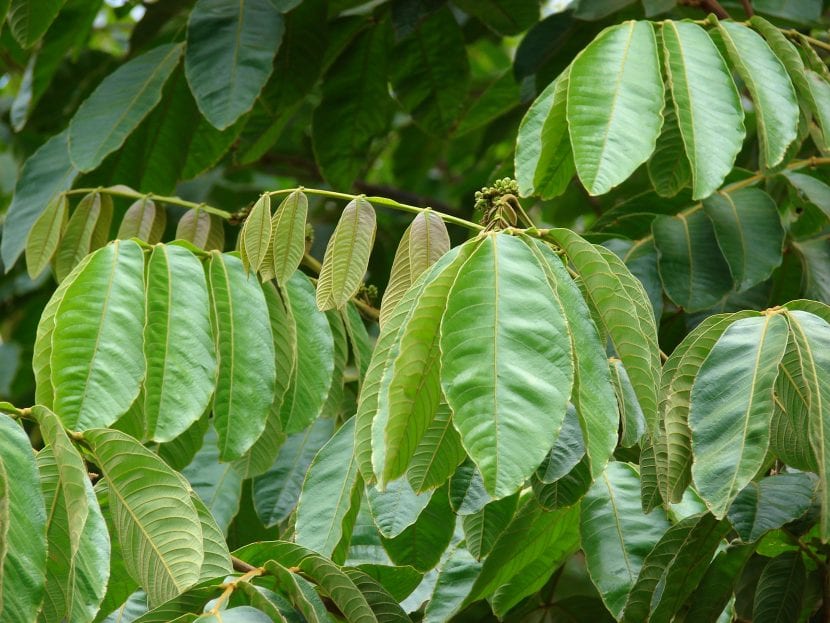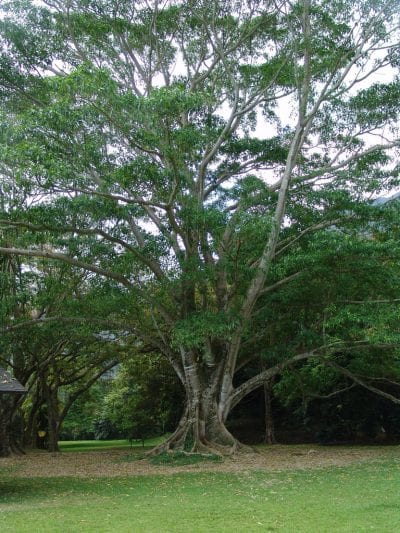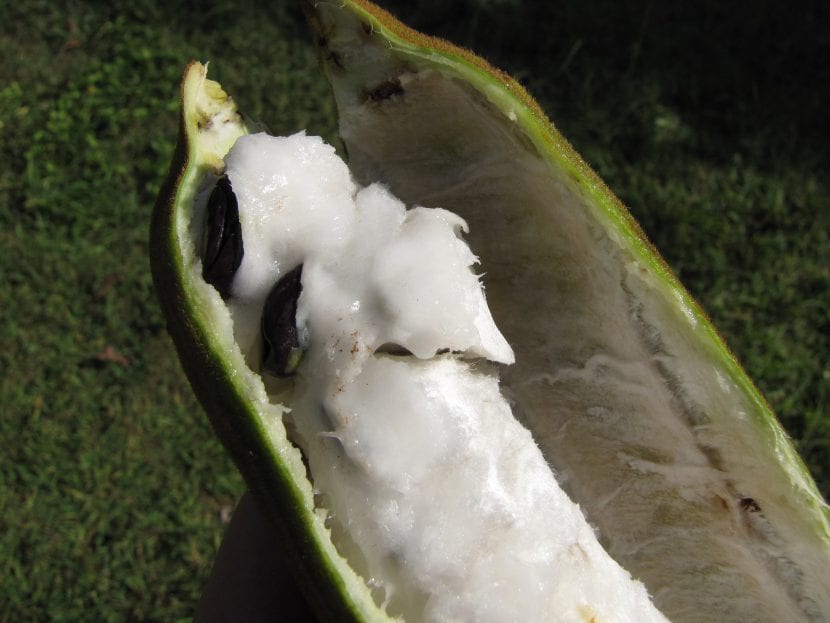
El pacay It is one of those trees that make you feel tiny. It reaches such impressive heights that, apart from looking up, you have to move a few meters away to be able to contemplate it in all its splendor. But also, it must be added that its fruits contain as if it were a cotton soaked in nectar that can be used as a snack.
Of course, due to its characteristics, it is not a plant that can be enjoyed in all gardens. For it, it will be very necessary to have a large area, where pipes, walls and other constructions are as far away as possible from it. Even so, it is always interesting to meet a species that is new to you, don't you think? 😉
Origin and characteristics

Our protagonist is an evergreen tree native to Central and South America, whose scientific name is Inga feuilleei. It is popularly known as pacay, pacae, guaba or guamo. Reaches a height of up to 18 meters, with a trunk thickness of up to 1m. The leaves are composed of 3-5 pairs of oblong-elliptical leaflets, and are green in color.
The flowers are grouped in spike-shaped inflorescences that are 3cm long. The fruits are flat pods 20cm long or more that contain an edible white pulp.
As a curiosity, say that roots fix nitrogen to the soil. This is one of the main macronutrients that plants need, as it is essential for them to grow and develop well.
What are their cares?

If you can and want to have a specimen (unfortunately, it is not a plant that can be grown in a pot, at least not always), we recommend that you provide it with the following care:
- Location: outside, in full sun or, if it is very hot (30ºC or more), in semi-shade.
- Earth: it must be fertile, with good drainage.
- Irrigation: 3-4 times a week in summer and every 5-6 days the rest of the year.
- Subscriber: once a month it is advisable to add some organic fertilizer, either guano, herbivorous animal manure, compost, wood ash, vegetables that can no longer be eaten, etc.
- Multiplication: by seeds in spring. They can be sown directly, or subjected to a pre-germination treatment known as thermal shock, which consists of introducing them for 1 second in boiling water -with a strainer- and immediately after leaving them 24 hours in a glass of water at room temperature. After that time, they are planted in pots, in semi-shade.
- Rusticity: supports from a minimum of -2ºC to a maximum of 30ºC. But it is preferable that frost does not occur, since it suffers damage even if it is occasional and of short duration. Young specimens are more sensitive.
What do you think?
In LAMBAYEQUE we know it as GUAVA, but being from the millennial PERU, it also has other denominations, for example PACAE, which I thought they said above all in the capital LIMA, but also in the east of our DEEP PERU!
Where I can find it
Hello Nancy.
I recommend you look at nurseries in your area, or on sites like amazon or ebay.
Greetings.
I would like to know the sources of information from where this article was written. I am quite interested in the subject of fruit trees in an urban park.
Hello Victor.
In the blog we have written a lot about fruit trees. I leave you this link where you can see the articles we have done on the subject.
A greeting.